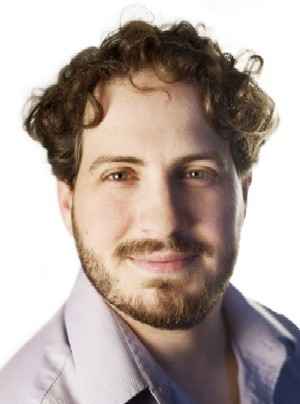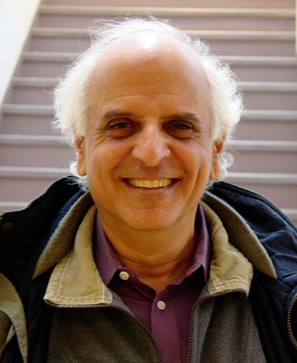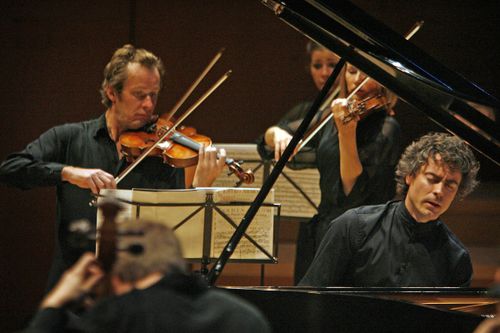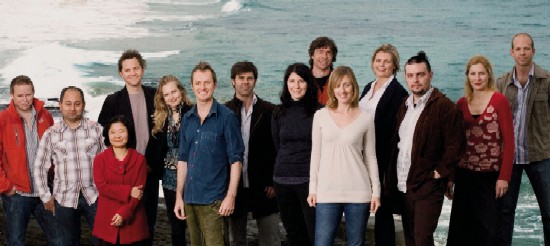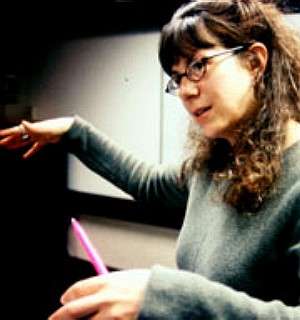
B loom’ is about Time or, rather, the suspension of our conventional sense of musical Time… The solo English horn plays bass notes from which chords bloom and rise up through the ensemble. ‘Bloom’ is a series of short sections, each of which is characterized by a specific texture. The English horn is either the prominent solo voice in the texture, or it becomes the lead voice in shaping the sound of the ensemble… ‘Bloom’ ends with a giant canonic chorale, which gradually reduces texturally until all that’s left are the double-reed instruments. This gradually thins out until the last thing we hear is the solo English horn—an ending that reminds us of—but isn’t exactly like—the opening.”E ven the sound of the word ‘Bloom’ is evocative—there’s an onomatopoietic rightness to it that we eagerly concur with after, say, only a minute or two into the piece. The world premiere of this composition by Marti Epstein for English horn and wind ensemble was performed by the Boston Conservatory Wind Ensemble on Tuesday evening this week, in the small recital hall of Boston Conservatory at 31 Hemenway, with Eric Hewitt conducting.
— Marti Epstein, program notes.
R obert Sheena, principal English horn with the BSO, was the featured soloist. Besides his BSO duties, Sheena is presently on-faculty with the Boston Conservatory, Boston University, New England Conservatory, and the Longy School of Music.

S heena’s treatment of the blossoming, organic phrases in ‘Bloom’ was expansive yet terse. In a work that is permissive of prolixity by the soloist, Sheena’s phrasing and dynamics were elegant, suggestive more than demonstrative—economical. The polyphonic ‘builds’ that Epstein refers to in her program notes—swelling and shrinking, ebbing and flowing—are a novel kind of canonical pattern. Rather than canonical forms that have more or less crisp, decidable beginnings and endings or cyclical structure, the canonical ‘builds’ in ‘Bloom’ involve non-deterministic propagation of musical thoughts or concepts between the soloist and the various sections in the ensemble.
T ime-lapse photography/cinematography of a bed of flowers opening and closing may have been the nominal motivation that inspired Epstein to compose this piece, but the physical and logical correspondences/parallels do not stop there. For example, there are gene-expression and receptor-signalling processes in biology that have closely analogous spatial features and time-oriented kinetics. So, as I sat enthralled with the performance last night I began to think, not so much about the provenance of the imagery that Epstein gave us, but thought instead of meta-concepts—how this piece is constructed, why these waves of sound propagating from section to section work the magic that they do [on us humans? on birds, dogs, whales, cicadas and other musical species?], and the ontology of the concepts underlying the musical structure and processes of ‘Bloom’.
T he English horn, of course, is fundamental to this ontology or world-view. Yes, Sheena’s realization of the part is economical, eschewing anything more than the minimum necessary, never to ‘comment’ on anything (any concept implied by the score) that should be self-evident or obvious to any thinking performer/listener. His refraining from dilatory interpretations makes Time itself more precious—a feature that is consistent with Epstein’s reverence for Sibelius ... Time made to stand still, Time stilled by Music.
B ut my saying this may seem to give too much emphasis to Sheena’s particular choices or Hewitt’s conducting or other performance details. Rather, the preciousness of Time inheres in the composition that Epstein has devised, and in her choice of English horn for the main character/protagonist.
W hat I mean is, not all instruments’ characters are created ‘equal’. The English horn’s distinctive timbre is a lucky endowment—it has an architecture (and a high double-reed back-pressure) that enables it to be ‘terser’ than most instruments are disposed to be.
A writer [musician] is someone for whom writing [musicking] is more difficult [risky; momentous; tight-rope-like] than for other people.”T he ebbing and flowing of the canonical structures—the contagious crescendos and decrescendos among the sections—reminded me of the aurora borealis… its dancing, shimmering colored curtains of light in the northern night sky… Reminded me, too, of the Belousov-Zhabotinsky reaction or other autopoietic/morphogenetic integro-differential Reaction-Diffusion equations in chemistry... Or, if Time is standing still, then maybe it’s like the birth of a nebula—something celestial, galactic. Yes, ‘Bloom’ seemed to me more celestial than botanical…
— Thomas Mann.
T he stochastic (non-deterministic) quality of the incipits’ beginnings and the stochastic dynamics of their propagating to other regions of the ensemble as they play—the uncertainty of the stochastics decreases our attending to the incipits themselves and increases our attention to what I would call ‘continuants’. ‘Continuant’ is a fancy term used in philosophy of language and in informatics, but it really signifies something pretty commonsensical: a sub-class or descendant of a higher-level (and prior/earlier) concept or utterance. Continuants inherit most of the attributes (morphology, behaviors, capabilities, tendencies, processes, etc.) of their higher-level precursor incipits [of which the English horn part is emblematic in ‘Bloom’], but they have autonomy of their own and are influenced by their own contexts and histories.
T here are links at the bottom of this CMT post on informatics ontology engineering, for you composers who want to see whether ontology architecture may have something to offer you as a compositional framework. Your intentions and results may be quite different form Epstein’s, of course. But the ontology engineering framework and methods might well be amenable to your aims, or might at least offer you some innovative inspiration...
T he ‘Basic Formal Ontology’ (BFO) in informatics theory consists in a series of sub-ontologies at different levels of granularity. The ontologies are divided into two varieties: SNAP (‘snapshot’) ontologies, comprehending continuant entities such as three-dimensional enduring objects, and SPAN ontologies, comprehending processes conceived as extended through, enduring, and spanning time. BFO incorporates both three-dimensionalist and four-dimensionalist perspectives on reality within a single framework. Interrelations are defined between the two types of ontologies in a way which gives BFO the facility to deal with both static/spatial and dynamic/temporal features of reality. Each SNAP ontology is an inventory of all entities existing at a time. Each SPAN ontology is an inventory of all the processes unfolding through a given interval of time. Both types of ontology serve as basis for a series of sub-ontologies, each of which can be conceived as a window on a certain portion of reality at a given level of granularity.”I n summary, one of the most novel and beautiful aspects of ‘Bloom’, to me, upon hearing this premiere performance, was these cascades of continuants—the waves upon waves of consequents: more and more [temporally- and spatially-disperse logical ——] consequents, piling up and washing over the antecedents/incipits laid down by Sheena’s English horn. The more loquacious instruments inject their colors/flavors—they could not do otherwise, any more than Sheena could prevent the English horn from being its terse self. And the organism, or flower bed, or aquatic algae bloom, or transcriptome, or receptor-signalling network, or galaxy, or whatever it is—is big enough and generous/tolerant enough to accommodate all of it. Heartwarmingly, beautifully so.
W e listened to Epstein’s new nebula blooming with an IMAX-type wonderment—floored by discovering a wideness of musical ‘peripheral vision’ that we didn’t previously know we had, awed by a deep-space ontology we hadn’t known was there. And then we stepped out of the recital hall and into the warm, starry Boston springtime night…
M arti Epstein has completed commissions for the Munich Bienniale, the CORE Ensemble, the Pro Arte Chamber Orchestra, the Foxborough Music Association, the Fromm Foundation, and Guerilla Opera, among others. She has been a fellow of the Tanglewood Music Center and a composer in residence at the MacDowell Colony. She is Professor of Composition at Berklee College of Music and at the Boston Conservatory.

- Marti Epstein website
- Marti Epstein page at Berklee
- Robert Sheena page at Longy
- Eric Hewitt page at BMOP
- Eric Hewitt page at Chas River Wind Ensemble
- Boston Conservatory website
- Nebulae and Stellar Birth page at Case Western Reserve Univ Astronomy Dept
- Upper Ontology page at Wikipedia
- General Formal Ontology page at OntoMed (Univ Leipzig)
- Lab for Applied Ontology (Italy)
- Incipits at Wikipedia
- Abdoullaev A. Reality, Universal Ontology and Knowledge Systems. IGI, 2008.
- Allemang D, Hendler J. Semantic Web for the Working Ontologist: Effective Modeling in RDFS and OWL. Morgan Kaufmann, 2008.
- Davies J, Studer R, Warren P, eds. Semantic Web Technologies: Trends and Research in Ontology-based Systems. Wiley, 2006.
- Davies J, Fensel D, van Harmelen F, eds. Towards the Semantic Web: Ontology-Driven Knowledge Management. Wiley, 2003.
- Dodd J. Works of Music: An Essay in Ontology. Oxford Univ, 2007.
- Ehrig M. Ontology Alignment: Bridging the Semantic Gap. Springer, 2006.
- Euzenat J, Shvaiko P. Ontology Matching. Springer, 2007.
- Gasevic D, Djuric D, Devedzic V. Model Driven Architecture and Ontology Development. Springer, 2006.
- Kompatsiaris Y, Hobson P, eds. Semantic Multimedia and Ontologies: Theory and Applications. Springer, 2008.
- Kramer L. Odradek analysis: Reflections on musical ontology. Music Analysis 2004; 23:287-309.
- Lacy L. Owl: Representing Information Using the Web Ontology Language. Trafford, 2005.
- Marsden A. Representing Musical Time: A Temporal-Logic Approach. Routledge, 2000.
- Nigro H, Cisaro S, Xodo D, eds. Data Mining With Ontologies: Implementations, Findings and Frameworks. Idea, 2007.
- Pisanelli D, ed. Ontologies in Medicine. IOS, 2004.
- Stock K, ed. Philosophers on Music: Experience, Meaning, and Work. Oxford Univ, 2007.
- Tamma V, Cranefield S, Finin T, Willmott S, eds. Ontologies for Agents: Theory and Experiences. Birkhauser, 2005.
- Treitler L. History and the ontology of the work. J Aesthetics and Art Criticism 1993;15: 483-97.
- Belousov-Zhabotinsky reaction (integro-differential Reaction-Diffusion equation)
- DSM. ‘Chûte d’Icare’: Inter-Part Contagion . CMT blog, 04-MAR-2009.
